
Niki de Saint Phalle’s art remains larger than a grand Zurich show
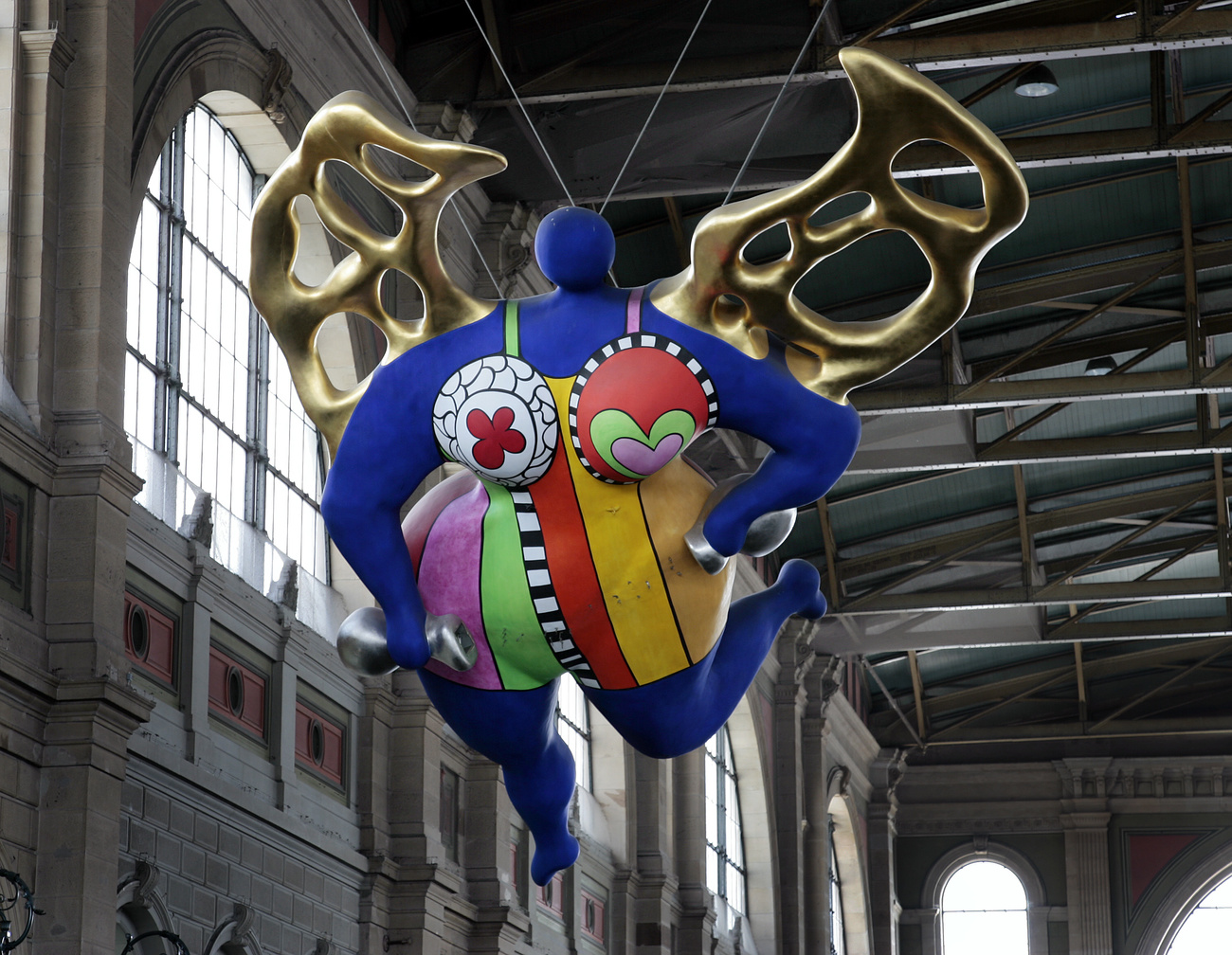
Zurich’s Fine Arts Museum is celebrating the work of Niki de Saint Phalle with a retrospective that, although comprehensive, falls short of transmitting the sense of adventure and the public scale of her art.
The spirit of French-American artist Niki de Saint Phalle (1930-2002) still casts a lively and colourful shadow on any traveller, visitor or commuter passing through Zurich’s main train station. They are greeted with a plump, 11-metre-tall sculpture of a guardian angel hanging in the concourse. Its colours and shapes attest to Saint Phalle’s trademarks: she is one of her Nanas, carrying the communicating jars of the Temperance Tarot card, a symbol dear to the artist. The card represents balance, patience and moderation.
L’ange protecteur was a gift from the security company Securitas to mark the Swiss Federal Railway’s 150th anniversary in 1997. Since then, it has become a merry fixture of the city’s landscape. Niki’s Nanas were conceived back in the 1960s as a symbol of joyful, liberated women and harbingers of an upcoming matriarchal age.
The exhibition at Zurich’s Fine Arts Museum, which runs until the beginning of January, provides a chronological trailer of her artistic career. But no matter how carefully curated, Saint Phalle’s oeuvre doesn’t fit the four walls of a museum. The legacy she left, after a career spanning over half a century, was intended to occupy and inhabit public spaces, in constant and eternal interaction with the public.
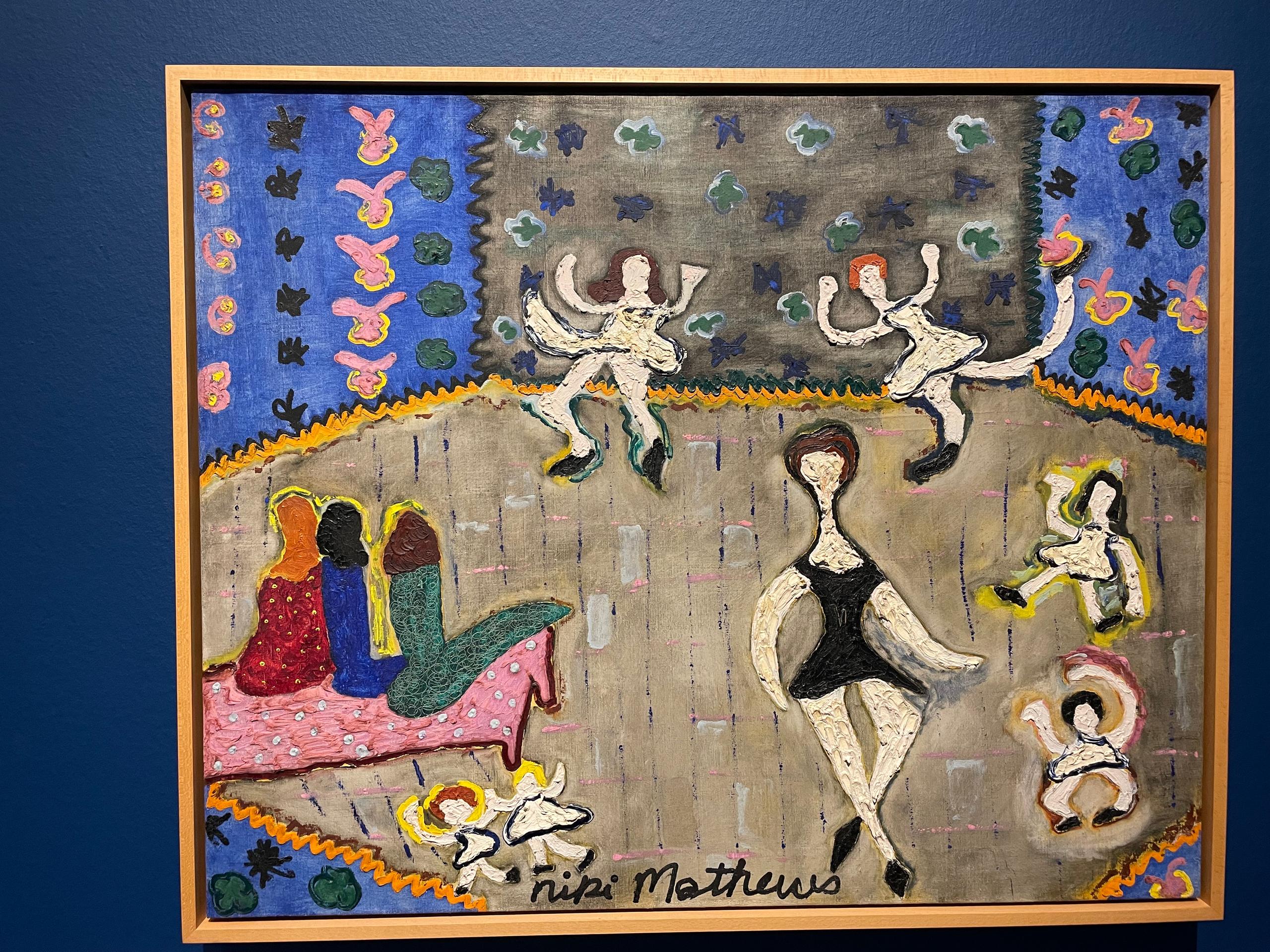
The visitor catches only a feeble glimpse of the avant-gardist and violent attitudes behind the work she left; much of it moved by her quest to free herself from a constricted bourgeois background and to heal from sexual abuse.
Her oeuvre is also a dynamic collaboration with her long-time lover, the Swiss kinetic artist Jean Tinguely, an artistic relationship well-represented in the Zurich museum.
Saint Phalle and Tinguely were the Bonnie and Clyde of the art world, in the words of the German film maker Peter Schamoni, who produced the most comprehensive documentary of their work to date, Niki de Saint Phalle – Who is the Monster, You or Me? (1995). Schamoni, who died in 2011, talked about the couple’s long collaboration in an interview with Swiss public television, SRF, in 2006:
You can watch the full film hereExternal link.
All that said, a retrospective of Saint Phalle’s work is very welcome even within the limitations of a museum. Her trajectory shines an important light on the development of contemporary art in the second half of the 20th century and the struggle for proper recognition of women in the art scene.
Healing wounds
Saint Phalle’s basic impulse towards art was a personal necessity, as a way to overcome traumatic experiences as a child and young adult.
She was raised in an aristocratic and oppressive social environment. The victim of sexual abuse from her father, she married young, at 18, and stumbled into motherhood. She had regular bouts of depression and suicidal tendencies and was placed in a psychiatric ward where she underwent electroshocks. For the ex-model (at the age of 18 she had appeared in fashion magazines such as Elle, Vogue and Harper’s Bazaar), art was not just a fancy, but the only way out.
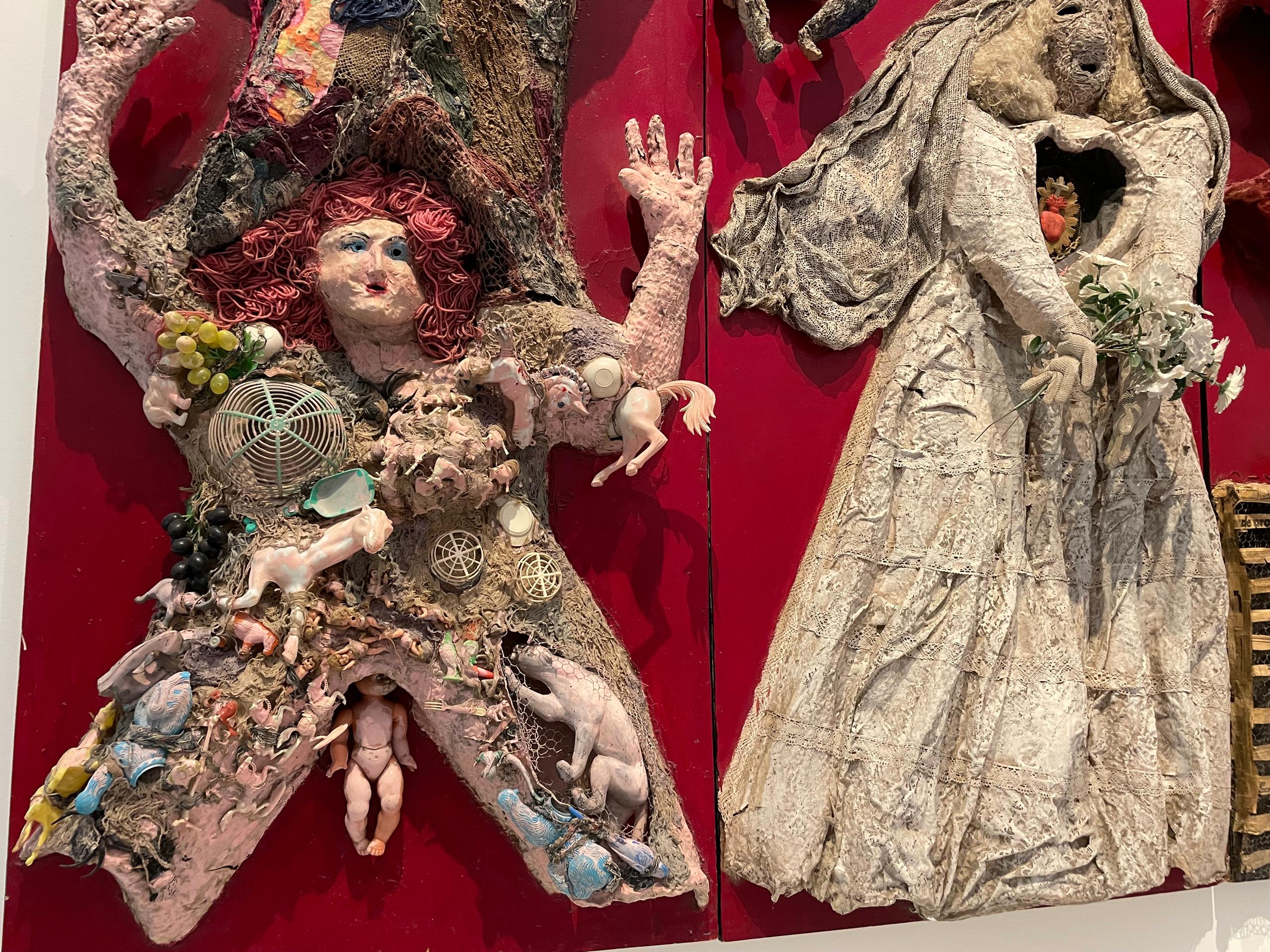
Shooting beasts
After divorcing her first husband, the writer Harry Mathews, in 1960, Saint Phalle dived head-on into her artistic practice and became an instant celebrity for “assassinating” her assemblages point-blank. She also promoted happenings as shooting sessions in which she invited the audience to take her .22-caliber rifle to have a shot.
As she says in Schamoni’s documentary: “The men in my life, those beasts were my muses. The suffering they inflicted, and the vengeance [against them] nourished my art for many years. I thank them.”
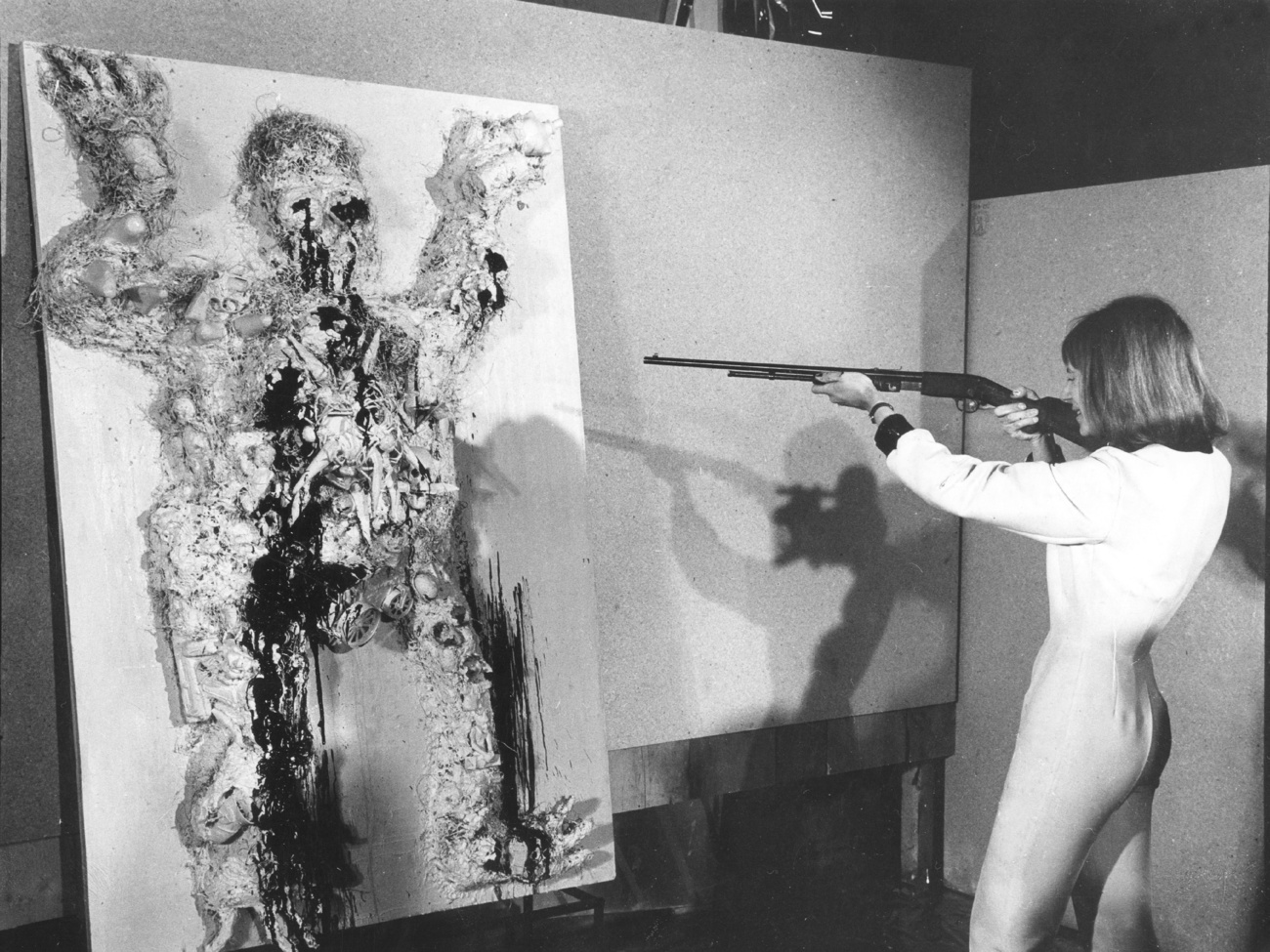
Later, she would expand the symbolism of her targets and take on world leaders.


Women’s woes
Saint Phalle’s intimate quests coincide with the rise of women’s liberation movements. As she shot her way to international fame, her lack of formal artistic education was not a hindrance to engaging with the vanguardist artists of the time in collective exhibitions in Europe and the United States.
Saint Phalle thus found herself in a privileged position to advance women’s participation in the arts, even if she refrained from taking part in any particular feminist group.
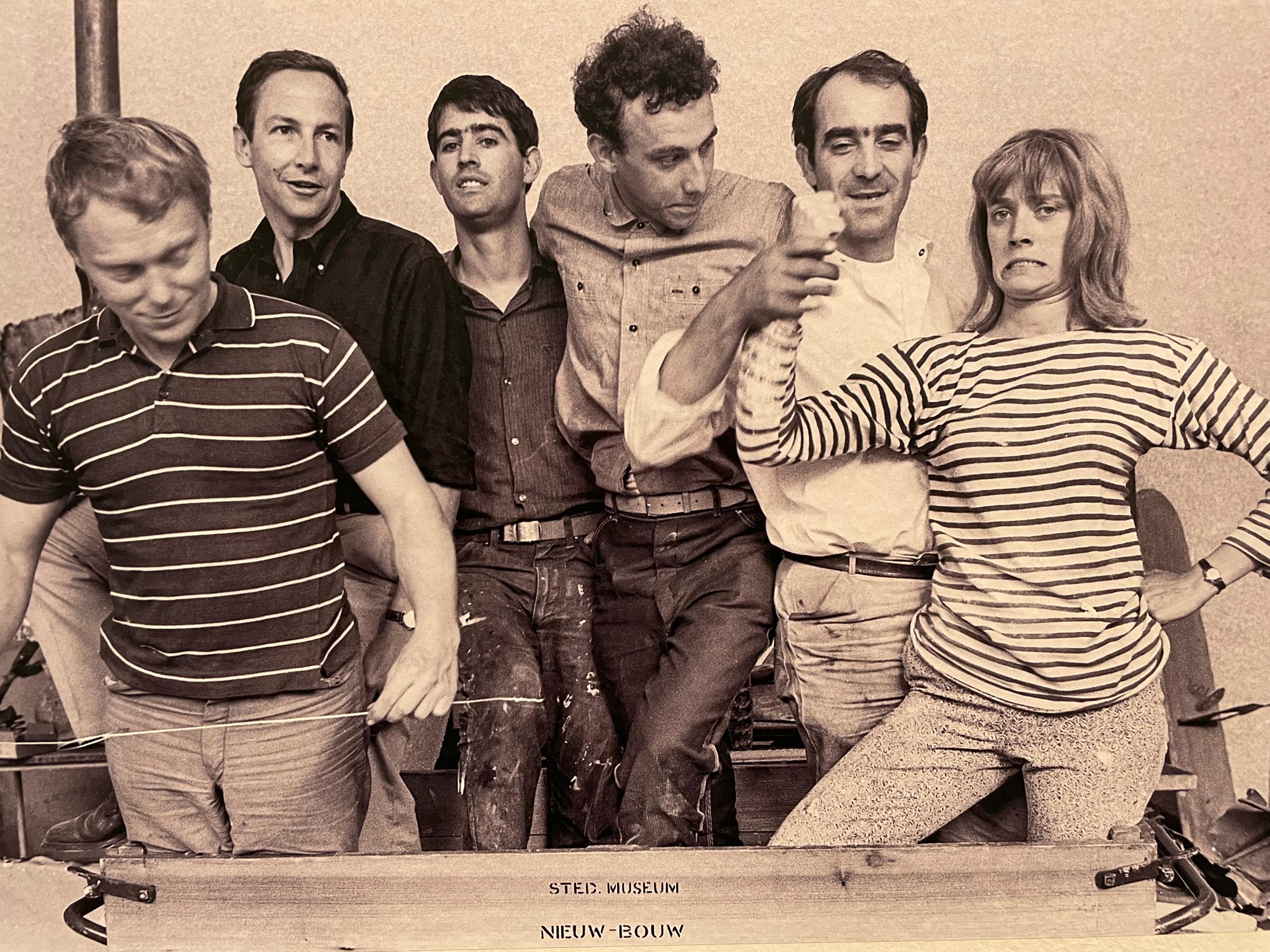
The collaboration with Tinguely, where life, love and work overlapped, was a duel, where Saint Phalle’s opposed Tinguely’s mechanical art – mostly made of engineered constructions — with her female humanist stance. By the start of the 1960s, and having overcome many (though not all) of her inner beasts, she moved on to develop her own feminist voice and style.
Feminist icon
The Nanas were a result of years playing with life-size dolls depicting women as brides, mothers and monsters, in which she looked for features that could impose a feminine statement in a male-dominated scene.
“Nana” was the common designation for female prostitutes during the second half of the 19th century. It was the title of a popular novel by French writer Émile Zola (1880) and of a “scandalous” painting by Édouard Manet (1877), depicting a bourgeois man and girl dressed in a petticoat and corset. In the 1960s the term was a colloquial, if not slightly sexist, way to refer to a girlfriend.
These references certainly didn’t go unnoticed by Saint Phalle as she assembled the largest of all of her Nanas in an anthological exhibition in Stockholm in 1966.
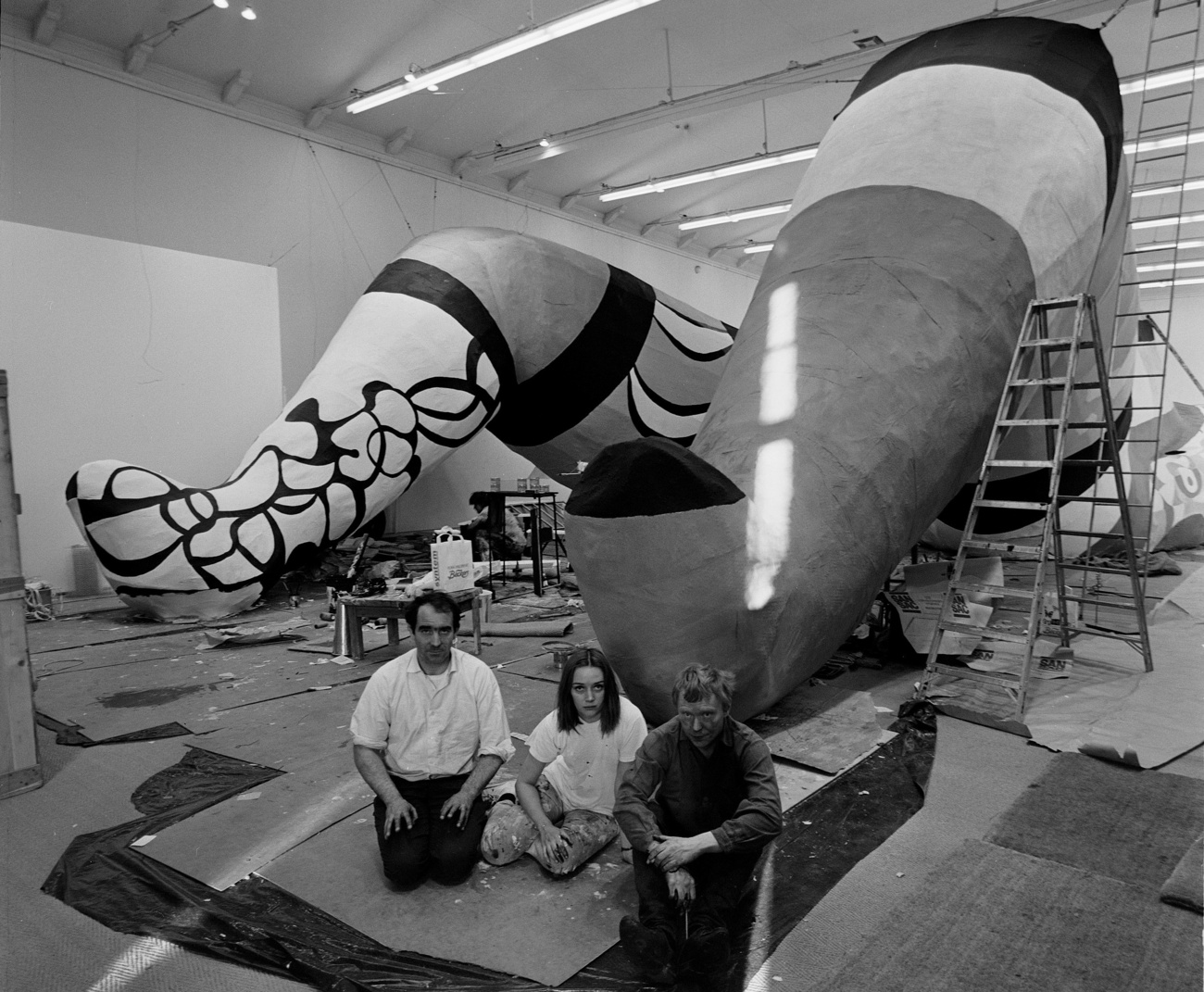
Hailed as an early feminist icon, Saint Phalle would soon invert expectations with her series of “anti-nana” sculptures known as the Devouring Mothers. Motherhood here was portrayed as anything but joyous or liberating.
Breaking from the traditional representation of motherhood as a fulfilling moment in a woman’s life brought her waves of insults and criticism, especially from the so-called second-generation feminist circles of the 1970s.
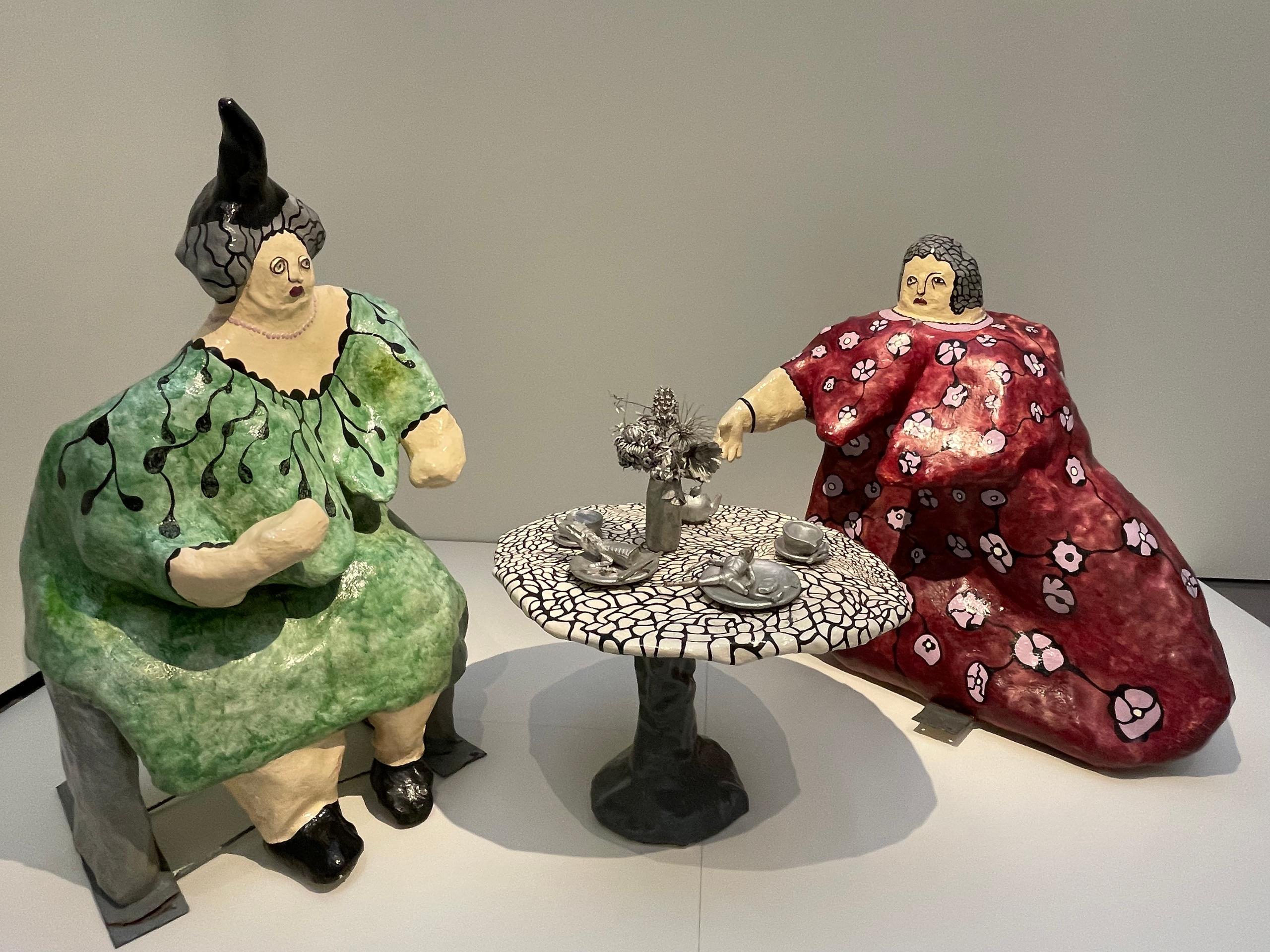
Selling out
By that decade, her series of Nanas were extremely popular. Their huge, colourful displays ran counter to the contemporary art scene, dominated by conceptualism and minimalism. The production of kinetic sculptures with Tinguely in public spaces, boosted in the 1970s, received ample media coverage.
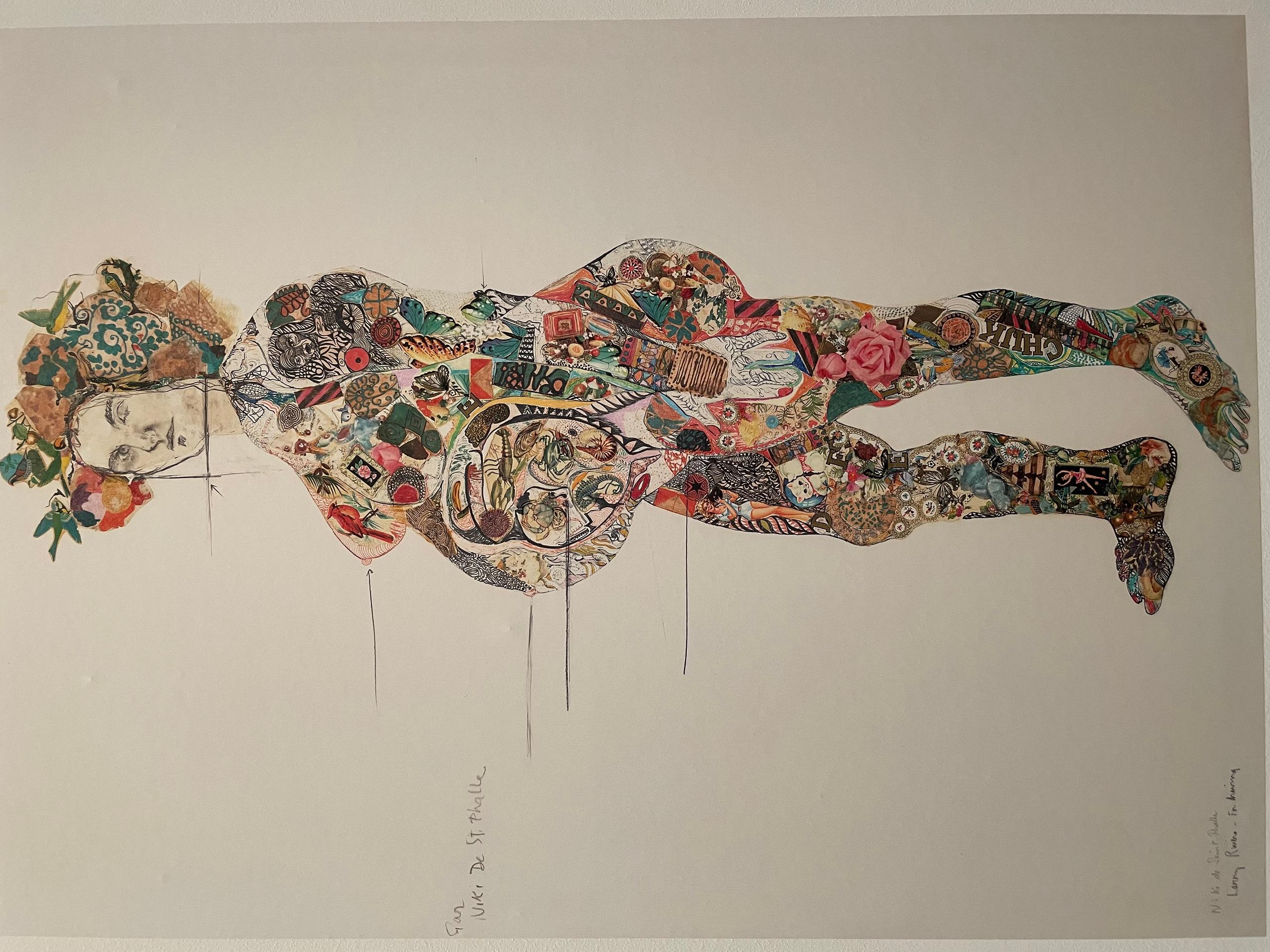
The public space assumed a decisive importance in her projects that were becoming more monumental – and expensive – to produce. To afford the construction of her most ambitious project, the Tarot Garden, which would eventually cost about $5 million (roughly $12 million (CHF11.2 million) today), she commercialised her popular Nanas and designed a branded perfume under her name. The move, which allowed her to remain financially independent, tarnished her reputation in the arts world.
Artivism
These reactions to her works didn’t catch her off-guard. She never felt the need to prove her feminist credentials and immersed her later work in political activism, with pioneering videos calling for awareness to the AIDS epidemic and voicing her concerns with American gun culture.

Happy end
Her efforts to make her Tarot Garden come true paid off. A work in progress of over 20 years, its construction counted on the collaboration of the local residents of the Garavicchio region in Tuscany, making it a collective work that the community could proudly claim as their own.
Tinguely died in 1991, and the Tarot Garden is filled with homages, some explicit, others discreet, to Saint Phalle’s most loved travel companion.
And travel one must, to properly appreciate and enjoy her legacy. There are 30 public works in Europe, scattered around Switzerland, Germany, the United Kingdom, Luxembourg, Italy and Sweden. There are also five in East Asia (Japan, South Korea and Taiwan), two in Israel, and 12 in the United States.
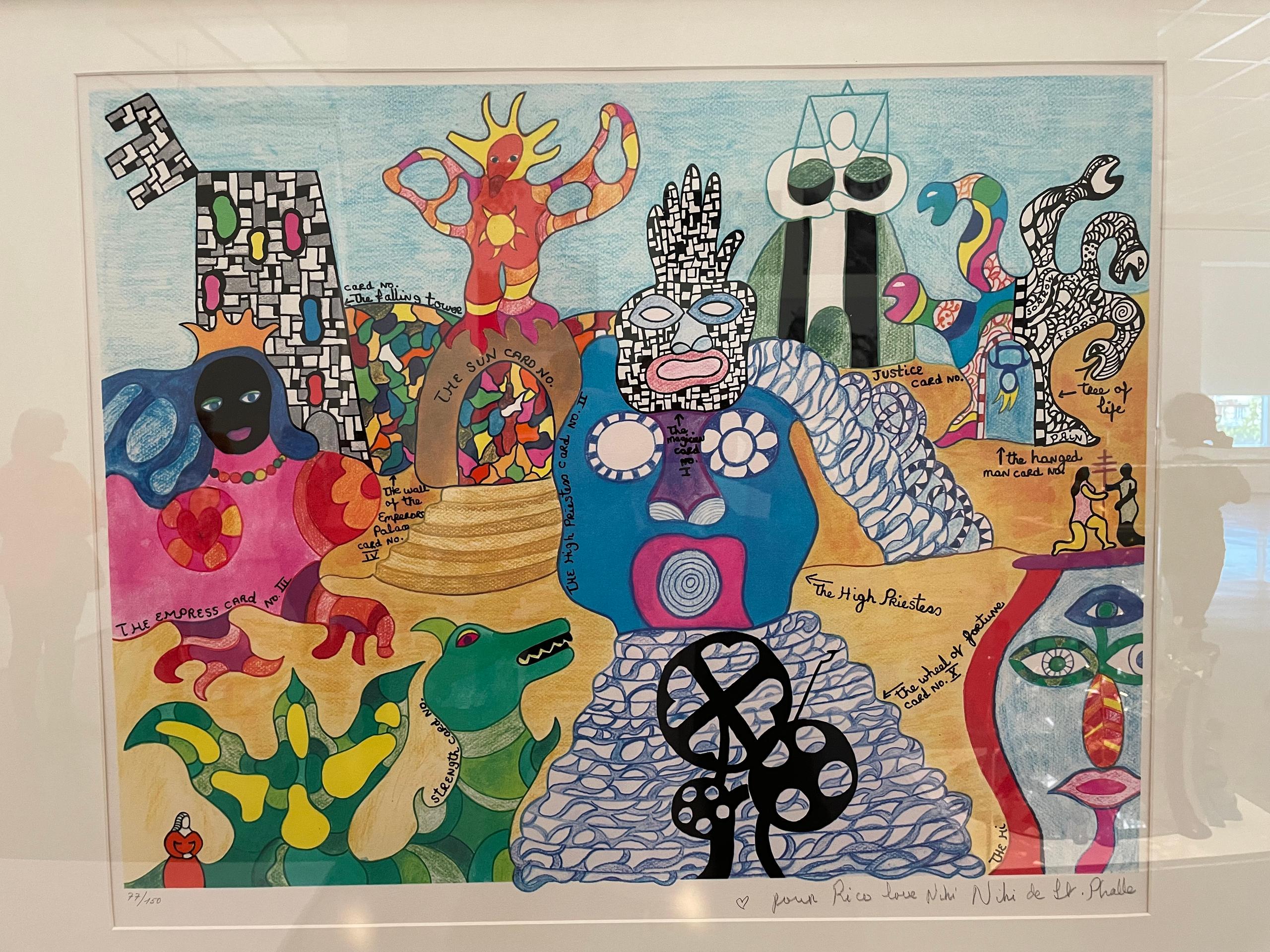
Edited by Virginie Mangin

In compliance with the JTI standards
More: SWI swissinfo.ch certified by the Journalism Trust Initiative




























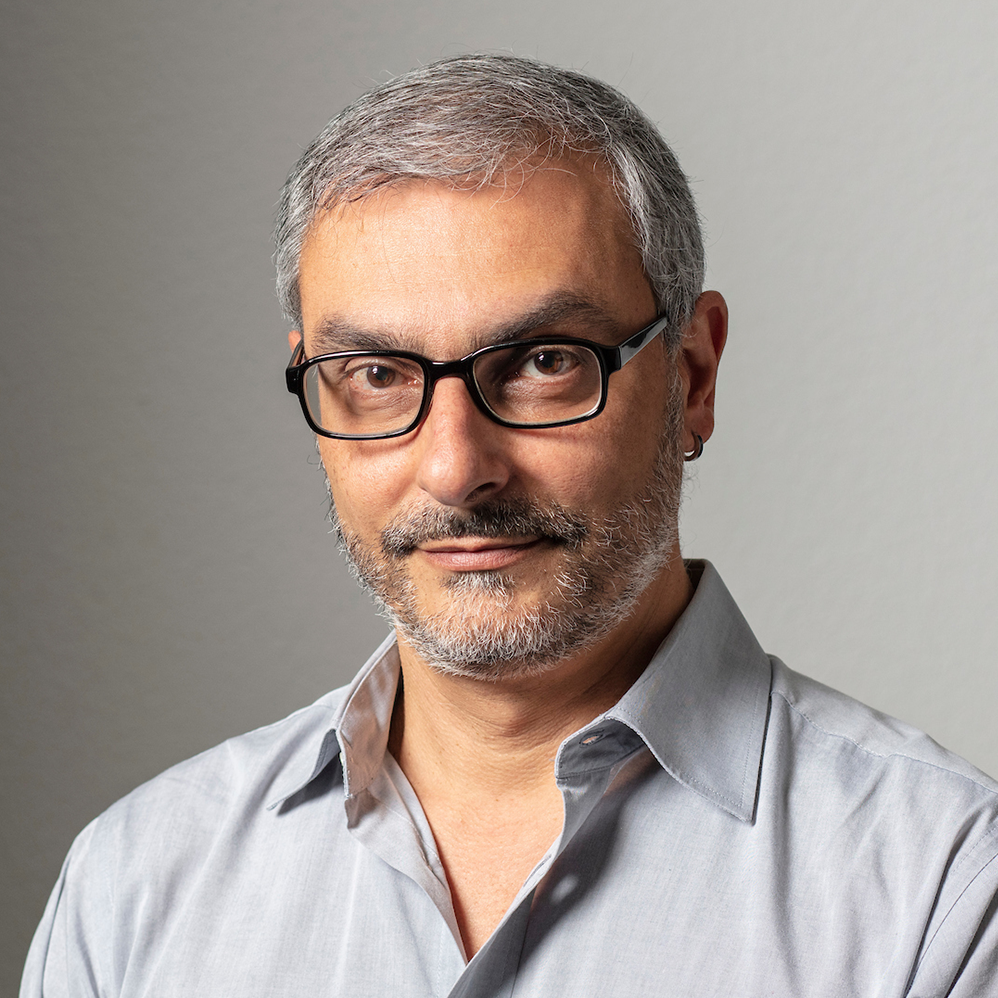
You can find an overview of ongoing debates with our journalists here . Please join us!
If you want to start a conversation about a topic raised in this article or want to report factual errors, email us at english@swissinfo.ch.